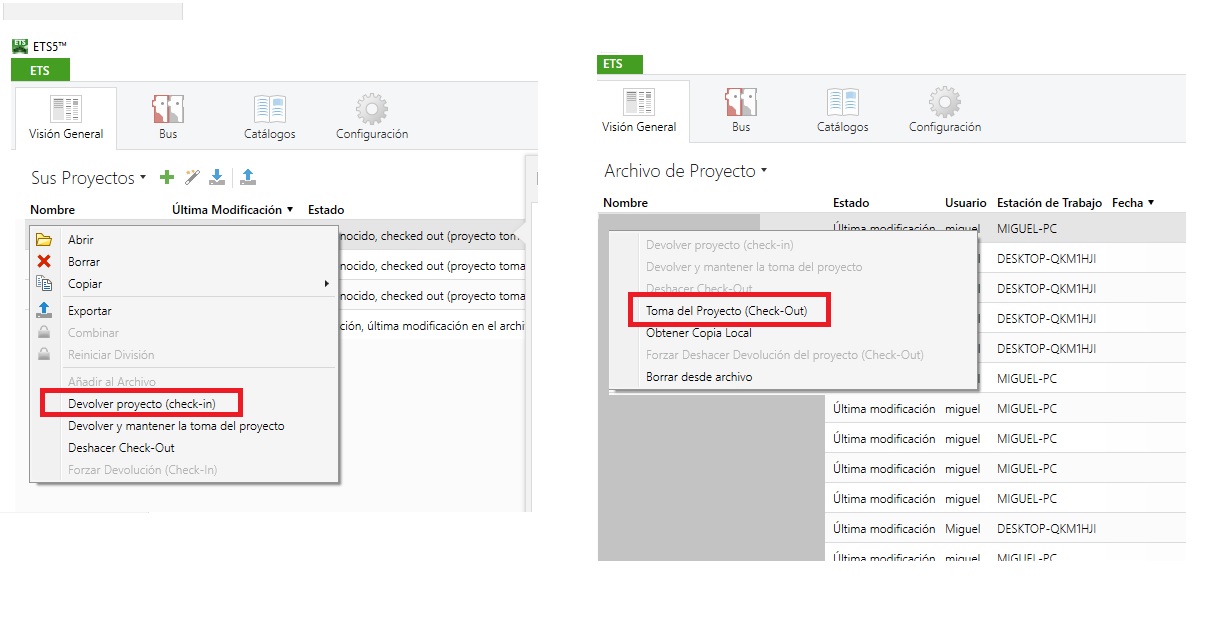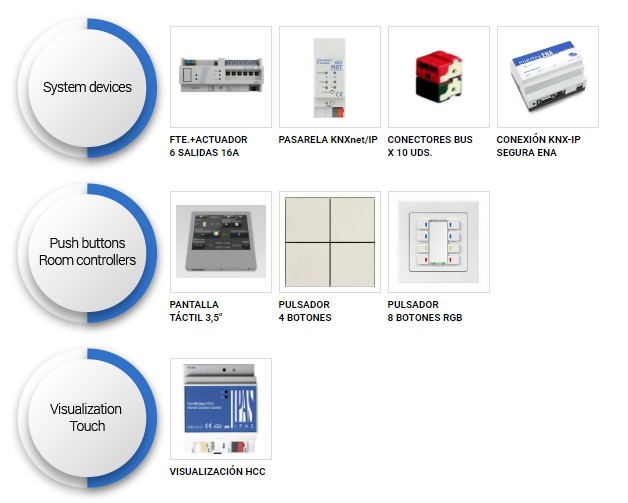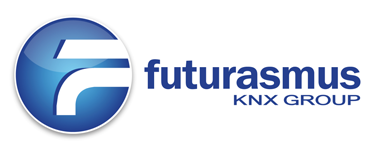KNX news
08 DE DICIEMBRE DE 2016
Tips awards 15th anniversary- 3rd price - Team work with the ETS

Let’s see one very useful tool in the ETS5: the possibility to work in projects run by a team of professionals working together collaboratively via a shared directory. In other words, if two or more programmers are working simultaneously on the same project, there is a way to do it in an orderly manner and avoid conflicts. The way to do is via a common directory (in network, in Dropbox…)
The proceeding goes as follows:
- In Configuration / Data storage: enter the path of the shared directory in the last option (“Project file”)
- Then, in the General View, just below that, we find all our projects saved locally under the name “Your projects”. If we click on “Your projects”, a drop down menu gives us the possibility to see those projects saved locally (Your projects) and those saved in the shared directory (Project file).
- In order to upload a project saved locally to the shared directory, we only need to right click on the relevant Project and select the option “Add to file”.
- Once the project has been uploaded, it will appear in the “Project file”. Then, if we wish to use that project ourselves to modify it, we click on it and select the option “Take the Project (check-Out)”.
- When we do so, a copy of the project will be downloaded into our PC and it will be marked as “Protected” in the Project File, so that our team colleagues know it is in use and they cannot work on it until we are done.
- As soon as we have finished the changes in the configuration, we select the project in “Your Projects” and select the Project “Return Project (check-in) ”.
- There are other more advanced options, such as the possibility to force a user to return the project. This is meat for special cases in which, for instance, of the programmers has lost his/her PC or has quitted his/her job at the company with one or more projects “taken”.

KNX devices are included in the 3rd price:

14 DE ENERO DE 2016
Ipas - µBrick series: Optimized to switch LEDs!

Ipas - µBrick series: : All actuators from the µBrick series stand out for their extremely compact design, very low price and extremely powerful application program and now also suitable for LED lamps.
Practical test run by Futurasmus: switch 45 LED circuits* and control 3 blinds by using 3 µBrick o18 actuators (12 DIN-rail-units). Without the LED function, the outputs would endure around 8.000 switchings; in this case, multiply by 40 the actuator’s life cycle (and reach up to over 300.000 switchings).
* 16 LED bulbs each with 8 W equals 128 W per output. Multiplied by 45 outputs gives you a total number of 720 LEDs adding up to a power of 5760W.(Mixed functionality is permitted: channels can be configured as LED, resistive, or shutter/blinds.)
PRODUCT INFO
TUTORIALS
16 DE ENERO DE 2010
The evidence we have been waiting for: KNX does save energy and now we proof it

These are the achieved conclusions:
1) Institute for Building and Energy Systems at Biberach University of Applied Sciences: “Particularly automation functions, which present a high degree of energy-saving potential by combining various individual trades, can today only be achieved using modern building system technology based on bus and communication systems.”
2) Bremen Univesity of Applied Sciences: based on a four-year series of measurements, the use of KNX control was found to reduce energy consumption by an impressive 50%. It is thus clear that the expenditure in building automation system has quick payback.
The research project conducted at this University shows Energy saving with KNX on the extent to which energy savings based on the example of heating energy. The newly constructed Centre for Informatics and media Technologies (ZIMT) has been fitted with KNX controls and equipment for regulating heating and lighting. The data collected has been evaluated, and comparisons made between “normal” operation and “automation” mode. The building has a specific energy consumption of 60-75 kWh/m2a. Two identical classrooms were selected as test rooms. One was fitted with a conventional installation, and the second with KNX control.
The above mentioned University calculated that, with an annual energy consumption of 230,000 kWh for lighting alone, the investment would pay itself back after just one year with a KNX bus control. Ultimately it is not just the owners/operators and investors who benefit from the reduced energy consumption: the climate does as well.
In summary, KNX allows the following energy savings to be made:
up to 40% with KNX shutter control
up to 50% with KNX single room control
up to 60% with KNX lighting control
up to 60% with KNX ventilation control




















